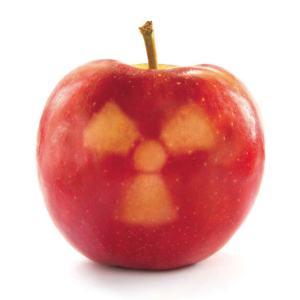by
Olga Deshchenko, DOTmed News Reporter | October 12, 2010
This report originally appeared in the October 2010 issue of DOTmed Business News
When the medical physics community discovered that some patients were getting radiation overdoses during CT exams, they got together at the Radiological Society of North America 2009 meeting to figure out how to address the problem. The discussion among CT physicists resulted in a broader meeting that took place the following spring, where all the parties involved in CT exams agreed on a set of optimum protocols.
With CT overexposure incidents still fresh on their minds, professionals began hearing of patients being seriously hurt or even fatally injured by radiotherapy treatments. Anyone involved in the planning or delivery of radiation or manufacturing of radiotherapy devices can cite at least one incident described in “Radiation Boom,” a New York Times series that examined the use of radiation and challenged the safety of its delivery.



Ad Statistics
Times Displayed: 136626
Times Visited: 7924 MIT labs, experts in Multi-Vendor component level repair of: MRI Coils, RF amplifiers, Gradient Amplifiers Contrast Media Injectors. System repairs, sub-assembly repairs, component level repairs, refurbish/calibrate. info@mitlabsusa.com/+1 (305) 470-8013
“I thought, ‘It’s happening all over again,’” says Dr. William Hendee, professor of radiology, radiation oncology, biophysics and community and public health at the Medical College of Wisconsin. “Our attention was already riveted on overdosing in CT and then similar issues arose in radiation therapy.”
Upon reading the first article in the Times, Hendee made phone calls to a group of industry leaders, including the president of the American Association of Physicists in Medicine. They decided to bring together radiotherapy stakeholders – medical physicists, radiation oncologists, administrators, manufacturers, dosimetrists and regulators – to come up with recommendations and an action plan. In late June, approximately 400 people attended the “Safety in Radiation Therapy – A Call to Action” meeting, held in Miami, Fla.
“We spent about a day and a half at this meeting thinking of ways that we can make patients safer in radiation therapy. We needed to look at the whole process of radiation therapy and recognize that it’s complex,” says Hendee.
Since concerns over safety made headlines earlier this year, a wave of action to prevent further accidents and restore confidence in the cancer treatment option swept through the industry. Manufacturers, regulators and the clinical community found themselves on the same page, reexamining their roles in patient safety throughout the treatment process.
For clinicians, it means streamlining protocols and communication processes. For regulators, it comes in a form of more rigorous investigations of new radiotherapy devices. For the OEMs, it’s centered on innovations hinged on clinical evidence and simplification of the systems that have turned thousands of cancer patients into survivors.

